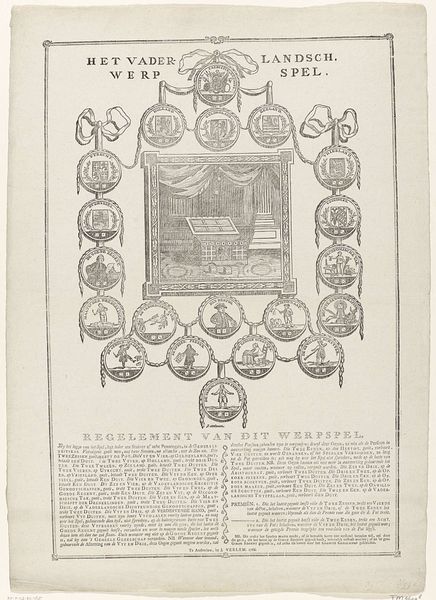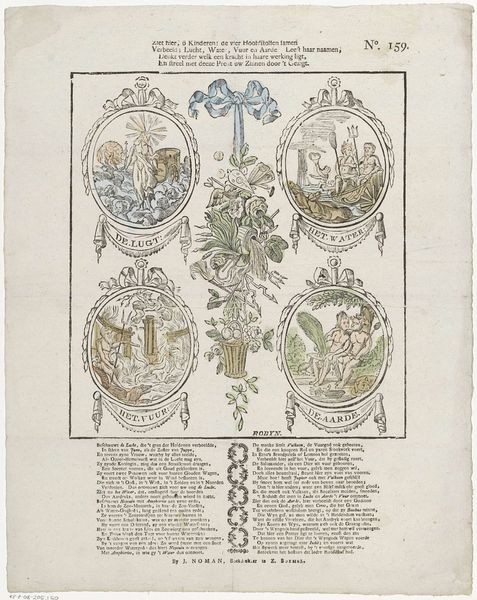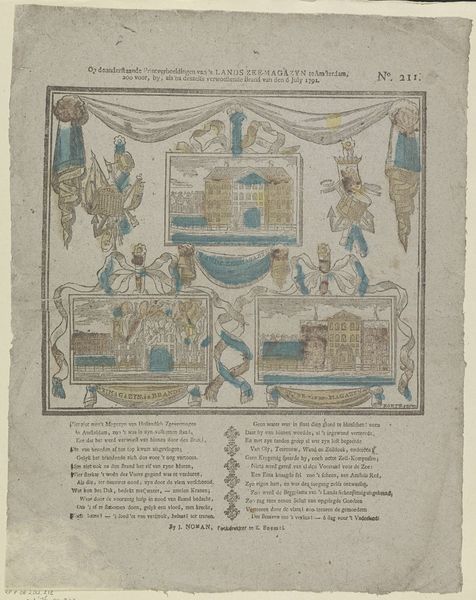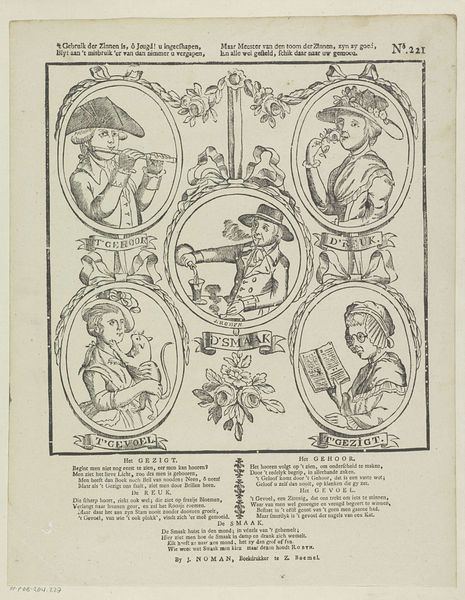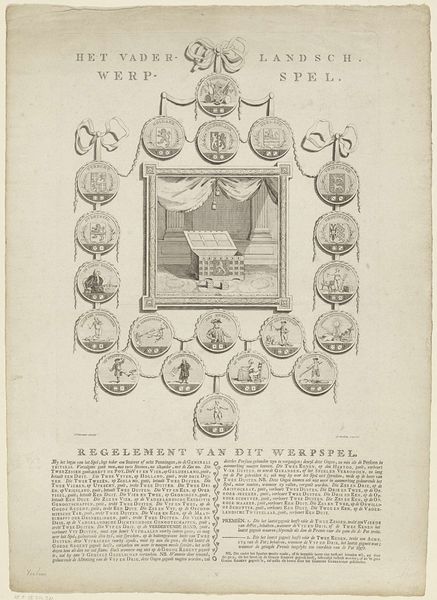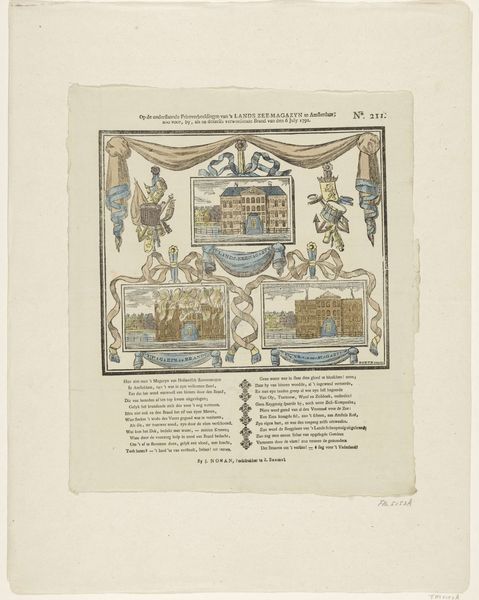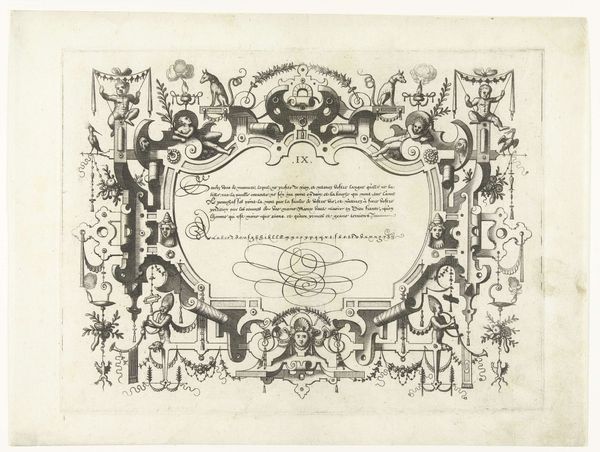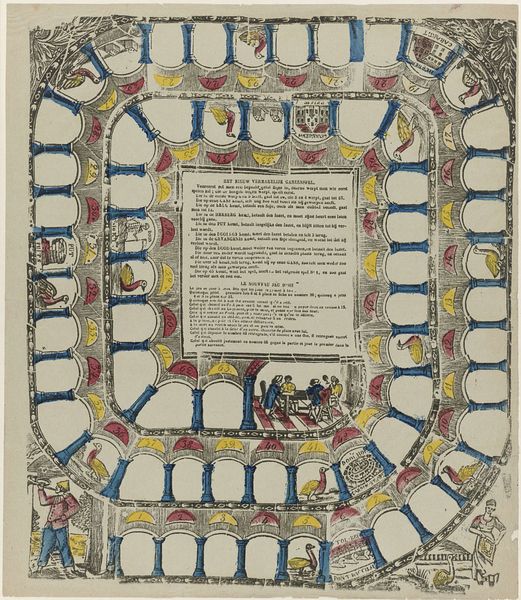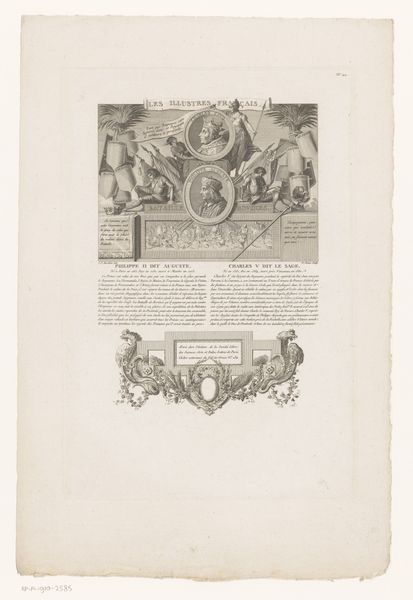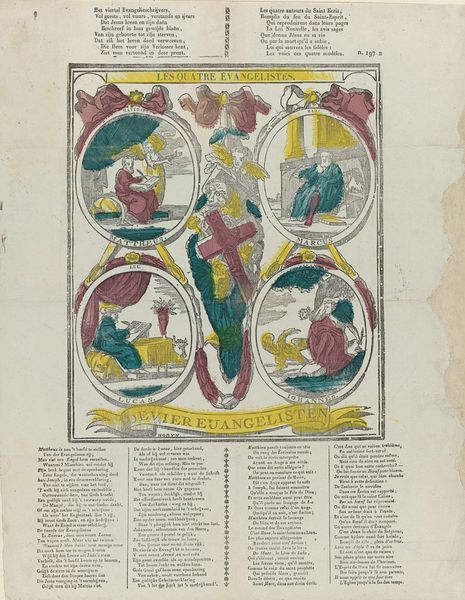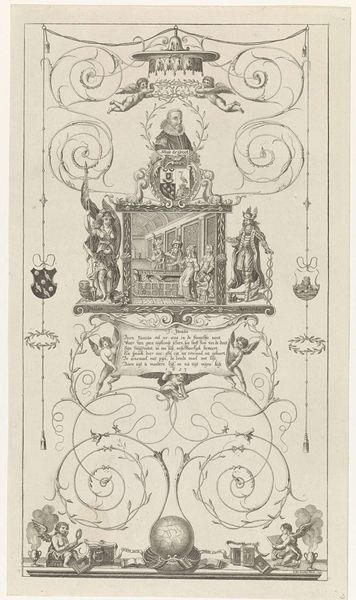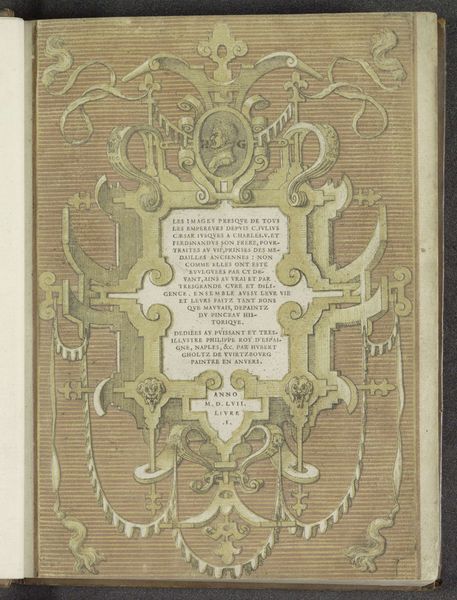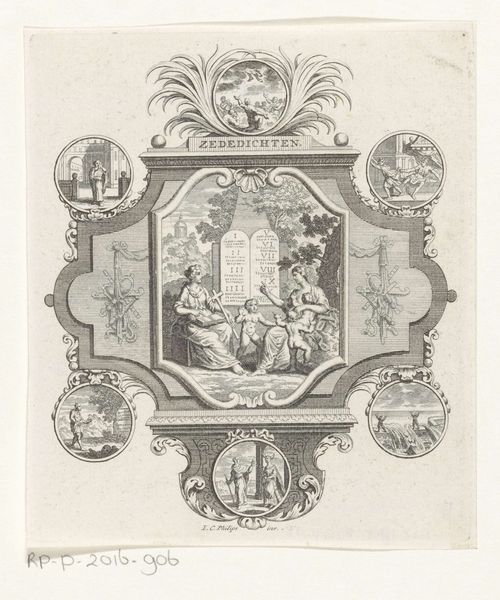
graphic-art, mixed-media, print, etching, paper, ink, engraving
#
graphic-art
#
neoclacissism
#
mixed-media
#
allegory
# print
#
etching
#
paper
#
ink
#
15_18th-century
#
genre-painting
#
history-painting
#
engraving
#
watercolor
Dimensions: height 590 mm, width 426 mm
Copyright: Rijks Museum: Open Domain
Curator: Let’s discuss "Het vaderlandsche werpspel," created in 1786. The work, whose title translates to "The National Throwing Game," resides here at the Rijksmuseum. Jan Oortman Sr. created it, using a mix of etching, engraving, and watercolor on paper. Editor: It looks like an ornate game board! All these charmingly awkward figures, connected by what looks like little ribbons, give me a sense of quirky, slightly chaotic, energy. I want to know how it works! Curator: The work employs an allegorical framework representative of the Neoclassical period. Each of these little scenes, presented within circular medallions, comments on Dutch society, law, and even morality at the time. Editor: So it's a political commentary disguised as a game? The figures, for instance—what do they represent? Some of them seem to be up to no good! Curator: Precisely. Some figures represent professions or social classes. Others represent various vices or virtues. The "throwing game" aspect lies in deciphering these symbols and their interconnectedness within the societal structure. This work critiques the flaws that can undermine civic virtue and national unity. Editor: And that little structure at the center, draped with blue curtains... It feels almost theatrical, or maybe legal? Curator: The centerpiece depicts a lottery box, signifying the element of chance and perhaps the unpredictable nature of political and social fortunes. The overall design emphasizes order, but with each individual vignette offering insight into the realities and the societal dynamics that existed during this pivotal time. Editor: Knowing that elevates the work beyond a mere visual curiosity. Suddenly, it’s speaking to power, corruption, even societal anxieties that resonate today. Curator: Absolutely. When we view such artwork, we begin to analyze historical contexts through a wider lens, one that encourages dialogue around the politics of representation and historical interpretation. Editor: I see something new every time I look! This print is really just a snapshot of a society playing out its roles. Curator: Indeed. It reveals as much about the anxieties and aspirations of 18th-century Dutch society as it does about art's power as social commentary. Editor: And reminds us that sometimes the most profound observations are packaged in the most playful forms.
Comments
No comments
Be the first to comment and join the conversation on the ultimate creative platform.
